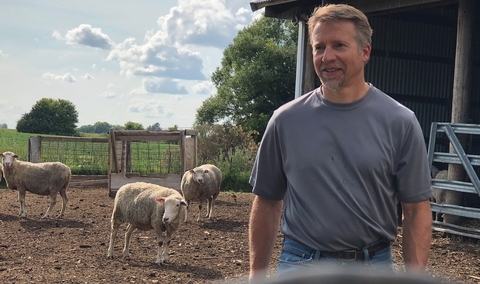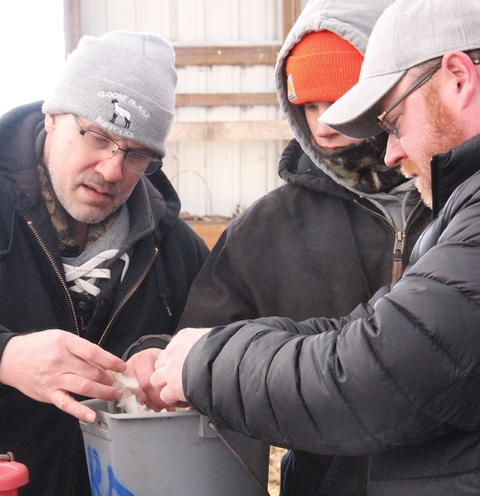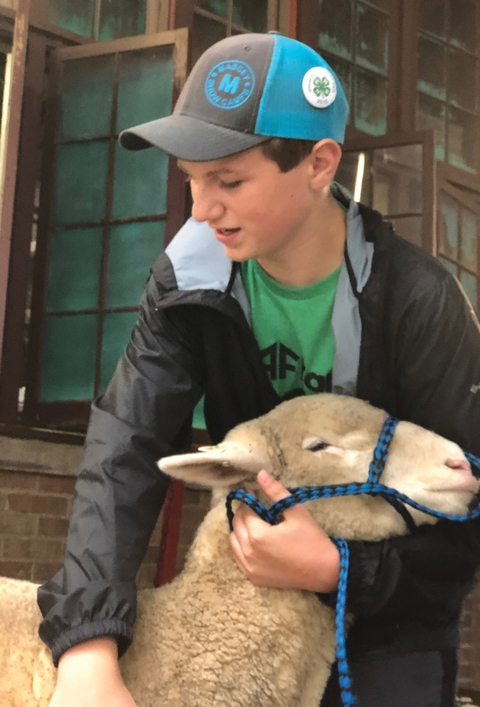Lamb is trending on home and restaurant menus, from lamb curry and burgers to herb-crusted bone-in chops.
Local lamb is better than ever, and the improvements are no accident. Travis Hoffman, who has a joint position with University of Minnesota Extension and North Dakota State University Extension, concentrates on ways to improve meat quality. “There are many changes people can make in selection, breeding, nutrition and processing,” Hoffman says.
“If people are going to pay for American lamb, it has to be a good product,” says Randy Kinney, president of the Minnesota Lamb and Wool Producers. “Travis knows sheep from the genetic standpoint. He helps us learn better feeding and when to send lambs to market. With his meat science background, he’s also teaching processors to do better with the cuts of meat.”
Among many, love of lamb is strong, but Kinney says consumption is still about 1 pound per person per year. Challenges, like processing and distribution gaps, must be overcome. But while sheep numbers continue to decline on a national average, Minnesota and North Dakota are holding steady and beginning to show signs of growth.
Wool makes smart art and clothing
Raising sheep for wool involves another set of practices, especially with breed and shearing. Hoffman is familiar with those, and others in Extension give a boost to the business side.
“Raising sheep is a great fit for many farms. Many do it as a secondary enterprise or while working off-farm, or as a hobby or for show. And it’s good for families too.”
—Randy Kinney, president, Minnesota Lamb and Wool Producers
“Wool is a sustainable and renewable resource, and involved in many creative fibers businesses,” says Connie Carlson, an associate program director with Extension’s Regional Sustainable Development Partnerships (RSDP).
Two key players Carlson has been working with are Sustainable Sheep and Fiber Community’s Alethea Kenney and Natural Fiber Alliance’s Jean Mueller.
Kenney explained, “I’ve raised farm animals for 20 years. In Minnesota I noticed that a lot of producers I talked to sold fleeces on the commodity market at rock-bottom prices. I thought, we can do better. As a hand spinner and fiber artist myself, I wanted to find more options for local people.”
After attending a northern Minnesota Lamb and Wool Producers event, Kenney decided to add new perspectives to the conversation. She applied for a grant to make changes at a new event the next year, including inviting guest speakers. The event was a success. “Fiber artists didn’t realize wool producers were creating such great fiber, and the fiber producers didn’t know that artisans would pay for that,” she says.
Kenney established the Sustainable Sheep and Fiber Community of Northern Minnesota, with help from Northwest RSDP, the Northwest Minnesota Foundation, and Sustainable Farming Association.
Mueller, a lifelong sheep farmer, began giving a fiber farm tour in 2002 and was able to expand tours with support from RSDP.
Supplier sustainability is an important part of this, Mueller says. “The farms we are looking at are large, but they take care of their animals and the soil. We want to make sure that the wool is beneficial to the earth, raised with soil conservation health in mind.”
4-H'er isn't sheepish about lamb
“Everyone’s taste is different, but I think lamb has a nice, rich flavor. In World War II, soldiers were served mutton, which is an older and less tender sheep than we produce today, and it came in cans. Thousands of cans. When the soldiers came home, they talked about how they never wanted to eat it again. That negative perception spread.
“Preparing good lamb the right way is incredibly important. For example, with a roast you want to cook it slow, but with grilling not as slow. My favorite lamb dish is the lamb chops my grandma grills with her homemade seasoning.
“Of those who do eat lamb, about 60 percent of what they buy is imported. We grow good breeds here in Minnesota, and take care to raise them well. My ewe is a Colombia wool breed, so I don't forget about the value of local wool either. We love having sheep, and we are learning more and more.”
—Ryan VanPelt, age 14, Mower County
His team researched and presented on the merits of lamb in the 2018 4-H Science of Agriculture Challenge. They took third place and were each awarded a $500 college scholarship.




